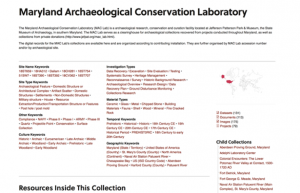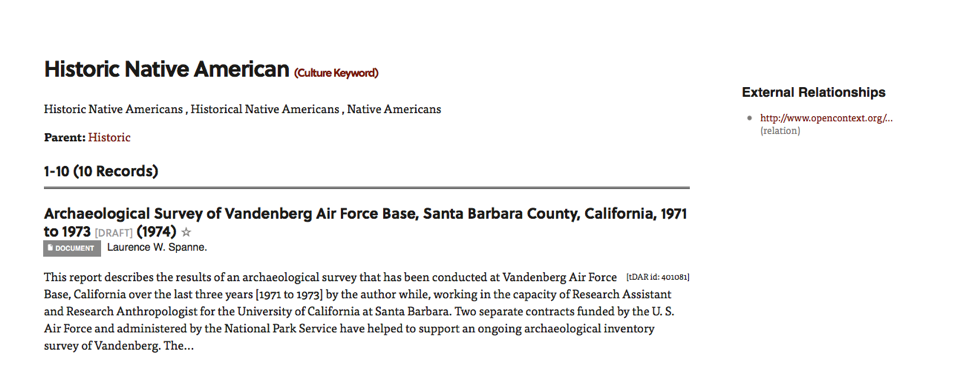Welcome to Obsidian: The Center for Digital Antiquity’s 15th major release of tDAR. In this overview of Obsidian you will find information detailing both the major and minor improvements made to the tDAR system. The pertinent modifications of Obsidian include improvements to Collection and Keyword Pages, Maps, Data Integration, and a new export feature.
Improved Collection Pages:
We have enhanced collection pages (example) to include more summary information about the collections’ contents. This includes a map showing where the resources in the collection are located geographically (aggregated from the bounding boxes) and clusters of common keywords related to the resources in each collection. Additionally, when viewed in the “map view”, collections now dynamically load all of the items in the collection onto the map.
Coding Sheet Mapping & Dataset Changes:
Coding sheets now have an error report displaying values that may be missing from them, but are present in the datasets they’re mapped to. They also include “special” mappings for values that are unknown, or missing.

Data Table Descriptions:
One of the missing features for data tables was a user’s inability to add a description to a dataset; we have corrected this issue.
Simplifying Associating Images with Datasets
With datasets like the Mimbres collection, we’ve added a new column type “filename” that simplifies the mapping between a row in a dataset and an image file.
Searching within maps:
With tDAR’s coverage being worldwide, one challenge is allowing a user to identify a specific area on the map to either search or draw their bounding box. We’ve added a search box in the top right of most maps to allow users to specify a town, city, state, or country to navigate on the map to the approximate location.
Improved World Map
We’ve expanded the world map on the homepage to allow users to filter down to specific states within the US. Users can now see how many resources are associated with each US State as well as country. This has also been implemented in an extensible form that will allow us to implement similar maps on collection pages.
Faster searching:
We’ve removed some of the debugging associated with the initial SOLR implementation as well as improved how we display and manage information in SOLR to significantly impact the search performance (In some cases, up-to 10x faster). Of note here, we were extremely conservative in our initial implementation of SOLR, and this release, along with the next few will start to make more aggressive changes that take advantage of all of SOLR’s features as well as improvements.
Data Export:
It’s important for users to feel confident about contributing their data to tDAR. Part of fulfilling our promise of being an archive is allowing users retrieve their materials again. We’ve added the ability to export all of the files associated with a billing account or collection. Users can make a request and the system will create a ZIP file with all of the files they uploaded, any archival versions, and copies of the XML metadata records, providing a description of all records.
Linked Open Data:
We’ve added the ability to associate keywords with external vocabularies such as Open Context, Pelagios, and other authorities. Those keywords and relationships are exposed as JSON-LD and embedded in each tDAR page.
Improved API Documentation:
We’ve updated tDAR’s API documentation to include more info on what APIs are available, and how to access and/or use them. We’d love your feedback on their functionality and are more than happy to assist with any questions you have. We are always open to suggestions on what you think would assist in the continuous improvement of tDAR.
GeoJSON search endpoint:
Along with our existing search endpoints (HTML, and RSS / GeoRSS), we’ve added a GeoJSON endpoint for tDAR allowing easier display of tDAR results on ESRI, Google, and Leaflet maps.
We hope you enjoy the new features and improvements available in our Obsidian release. As always, we encourage you to be in touch with questions or feedback. If you would like to learn more about tDAR for your personal or professional research and data management needs contact us.

